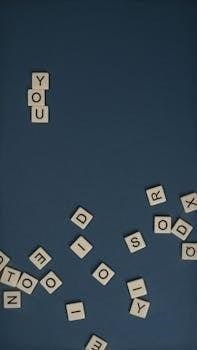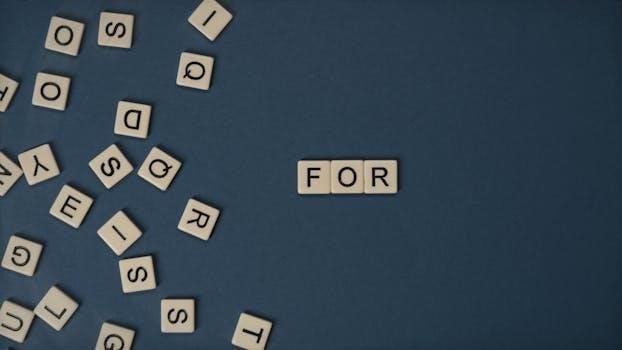Understanding the Spanish Alphabet
The Spanish alphabet is a foundational element for learners. It consists of 27 letters, a slight variation from English. Mastering these letters is crucial for pronunciation and reading comprehension. Learning the alphabet is indeed the first step for beginners.
Embarking on the journey of learning Spanish begins with understanding its alphabet. While sharing similarities with the English alphabet, the Spanish alphabet includes unique letters and sounds that are essential for accurate pronunciation and comprehension. Recognizing and mastering these fundamental building blocks will lay a solid foundation for your language learning experience. The Spanish alphabet is composed of 27 letters, featuring additions such as “ñ,” which distinguishes it from its English counterpart.
This introduction will guide you through the basics, providing a clear understanding of each letter and its corresponding sound. Grasping the alphabet is crucial for reading, writing, and speaking Spanish effectively. It enables you to decode words, construct sentences, and communicate with confidence. So, let’s dive into the fascinating world of the Spanish alphabet and unlock the doors to a new language.

Spanish Alphabet Structure
The Spanish alphabet comprises 27 letters, including unique characters like “ñ.” Understanding this structure is essential for mastering the language. Recognizing vowels and consonants and their sounds aids pronunciation and fluency in Spanish communication.
The 27 Letters of the Spanish Alphabet
The Spanish alphabet, a cornerstone of the language, consists of 27 letters. These letters form the building blocks for all written and spoken Spanish.
It includes the familiar 26 letters from the English alphabet, plus the distinctive “ñ” (eñe). This unique character represents a palatal nasal sound, differentiating Spanish from many other languages.
Understanding the order and names of these letters is crucial for beginners. Each letter has a specific pronunciation, which, while sometimes similar to English, has distinct nuances. For example, the letter “h” is typically silent.
Learning the alphabet provides a solid foundation for pronunciation, spelling, and vocabulary acquisition. Familiarizing yourself with these 27 letters will significantly enhance your ability to read, write, and speak Spanish effectively. Mastering this initial step paves the way for more advanced language skills.

Pronunciation Guide
A clear pronunciation guide is essential for mastering Spanish. Vowels have consistent sounds, while consonants can vary. This section offers insights for learners to accurately pronounce Spanish words and phrases.
Vowel Pronunciation in Spanish
Spanish vowel pronunciation is remarkably consistent, offering a stable foundation for language learners. Unlike English, where vowel sounds can shift dramatically depending on context, Spanish vowels generally maintain a single, clear sound. This consistency simplifies the learning process, allowing students to quickly grasp the basics of Spanish phonetics. Each of the five vowels—a, e, i, o, u—has a distinct pronunciation that remains relatively constant across different words.
The ‘a’ is pronounced like the ‘a’ in “father,” the ‘e’ sounds like the ‘e’ in “bed,” the ‘i’ is similar to the ‘ee’ in “see,” the ‘o’ resembles the ‘o’ in “go,” and the ‘u’ sounds like the ‘oo’ in “moon.” By mastering these fundamental vowel sounds, beginners can significantly improve their pronunciation and comprehension of spoken Spanish. This section provides detailed examples and exercises to solidify your understanding.
Consonant Pronunciation Nuances
While Spanish vowels are straightforward, some consonants present unique challenges for English speakers. Certain letters have pronunciations that differ significantly from their English counterparts, requiring careful attention and practice. For instance, the letter ‘h’ is typically silent in Spanish, unlike its voiced counterpart in English words like “house.” Similarly, the letter ‘j’ is pronounced with a guttural sound, similar to the ‘h’ in the Scottish word “loch.”
The letter ‘r’ also has variations, with a single ‘r’ often trilled, especially at the beginning of a word or after ‘n,’ ‘l,’ or ‘s.’ Furthermore, the letters ‘c’ and ‘g’ can have different sounds depending on the vowel that follows them. Understanding these nuances is essential for achieving accurate pronunciation and avoiding common mistakes. This section provides detailed explanations and examples to help you navigate these complexities.

Learning Resources
To master the Spanish alphabet, various resources are available. These include printable cheat sheets, practice worksheets, and interactive PDF documents. These tools aid in memorization and pronunciation, crucial for beginners.
Free Spanish Practice Sheets PDF
Embark on your Spanish learning journey with our complimentary PDF practice sheets! Designed for absolute beginners, these sheets provide a structured approach to mastering the Spanish alphabet. The PDF includes exercises focused on letter recognition, pronunciation, and basic word formation. You will find that our free Spanish practice sheets PDF is a great starting point. Each practice sheet focuses on a particular skill.
Download your free Spanish practice sheets PDF today and begin to learn the Spanish language in no time! This is a must-have guide for absolute beginners to get started. You will find the worksheets easy to follow along. Each printable worksheet will build upon the lessons learned from prior worksheets;
Alphabet Cheat Sheets and Worksheets
Elevate your Spanish alphabet learning with our comprehensive cheat sheets and worksheets! These resources are crafted to reinforce your understanding and provide ample practice opportunities. The cheat sheets offer a quick reference guide to the Spanish alphabet, including pronunciation tips and letter names. Paired with the cheat sheets, the worksheets will help you practice what you have learned.
Our worksheets go beyond simple memorization, encouraging active engagement with the language. Use these alphabet cheat sheets and worksheets to practice writing the letters, words, and phrases. Be sure to print them out! These tools are invaluable for solidifying your knowledge and building a strong foundation in Spanish.
Teaching the Spanish Alphabet
Teaching the Spanish alphabet requires engaging tools. Especially for beginners, activities and visuals are key. Teachers need quick tools for Spanish class to make learning engaging and fun for their students.
Engaging Activities for Beginners
For beginners, learning the Spanish alphabet can be made enjoyable through various activities. Using a Spanish alphabet chart with pictures is a great start, offering visual associations that aid memory. Employing flashcards with colorful illustrations further enhances engagement, particularly for younger learners. Incorporating games that involve matching letters with corresponding words reinforces learning in a playful manner. Interactive worksheets that focus on writing out letters, words, and phrases provide practical application.
Consider group activities where students practice pronouncing letters aloud, taking turns to say each letter. This promotes confidence and encourages peer learning. Utilize free Spanish practice sheets in PDF format, offering structured exercises for reinforcement. Integrating songs and rhymes that feature the Spanish alphabet can also be highly effective.
Teachers can also create their own alphabet cheat sheets, tailored to the specific needs of their students. By combining visual aids, interactive exercises, and collaborative learning, beginners can grasp the Spanish alphabet with ease and enthusiasm.
Spanish Alphabet Chart with Pictures
A Spanish alphabet chart with pictures is an invaluable tool, especially for visual learners and beginners. These charts typically feature each letter of the Spanish alphabet paired with a corresponding image, making it easier to associate the letter with a word and its pronunciation. For instance, the letter “A” might be accompanied by a picture of an “árbol” (tree), providing a clear and memorable connection.
Such charts often come in both full-color and black-and-white versions, offering flexibility for different learning environments and printing capabilities. Teachers can use these charts as a central reference point in the classroom, displaying them prominently for students to consult; The visual aids are also helpful for creating engaging activities, such as matching games where students pair letters with their corresponding pictures.
Furthermore, these charts can be incorporated into worksheets and other learning materials, reinforcing the connection between letters and images. The combination of visual and auditory learning makes the Spanish alphabet chart with pictures an effective resource for mastering the basics of the language.

Additional Letters and Sounds
Beyond the core alphabet, Spanish includes digraphs like “CH” and “LL,” representing distinct sounds. Mastering these, alongside regional variations, is key. Understanding these nuances will greatly improve pronunciation and comprehension skills.
Digraphs⁚ CH and LL
In the Spanish alphabet, “CH” and “LL” hold special significance as digraphs. A digraph consists of two letters combining to form a single, unique sound, separate from the individual sounds of each letter. “CH” typically represents a sound similar to the “ch” in the English word “church.” For example, the Spanish word “muchacho” (boy) uses this digraph.
The digraph “LL,” traditionally considered a distinct letter, produces a sound akin to the “y” in “yellow” in many regions. However, its pronunciation varies across different Spanish-speaking countries and even within regions. In some areas, it might sound closer to the “zh” in the English word “azure.” Understanding these regional differences is essential for effective communication.
While the Royal Spanish Academy (RAE) no longer officially considers “CH” and “LL” as individual letters in the alphabet, their unique sounds and historical importance necessitate dedicated attention. Mastering these digraphs is crucial for accurate pronunciation and comprehension of spoken Spanish. Therefore, learners should focus on recognizing and practicing these specific sound combinations early in their studies.
Using Spanish Alphabet PDFs
Spanish alphabet PDFs are invaluable resources for learners. They offer convenient, printable guides for mastering letters and pronunciation. Downloadable PDFs provide accessible learning tools for beginners and advanced students.
Downloadable PDF Resources
Downloadable PDF resources are incredibly useful for learning the Spanish alphabet. These resources often include alphabet charts, pronunciation guides, and practice worksheets. They can be easily accessed and printed for convenient study anytime, anywhere. Many free PDFs are available online, offering a cost-effective way to begin learning.
These PDFs frequently incorporate visual aids like pictures or colorful designs to make learning more engaging. They cater to various learning styles and proficiency levels. Some PDFs focus solely on the letters themselves, while others include basic vocabulary words associated with each letter.
For teachers, these resources provide valuable tools for classroom instruction. They can be used to create interactive activities and reinforce letter recognition. Students can also benefit from using these PDFs for self-study and homework assignments. Look for resources that offer audio pronunciation guides to further enhance your learning.
Benefits of Printable Alphabet Guides
Printable alphabet guides offer numerous benefits for Spanish language learners. They provide a tangible, readily accessible resource for practice. Unlike digital resources, printable guides don’t require a device or internet connection. This makes them ideal for learning on the go or in areas with limited connectivity.
These guides serve as excellent visual aids, especially for beginners. They often include clear, concise pronunciation tips alongside each letter. Many printable guides also incorporate engaging visuals, such as pictures or colorful designs, making learning more enjoyable and memorable.
Printable guides can be easily customized to suit individual learning preferences. Learners can highlight, annotate, or add notes directly to the guide. They are also perfect for creating flashcards or other interactive learning tools. Furthermore, printable guides are a valuable resource for parents and teachers looking to support language learning at home or in the classroom.
Historical Context
The Spanish alphabet’s evolution reflects linguistic changes over centuries. Its roots lie in Latin, with adaptations reflecting unique Spanish sounds. Understanding this history provides insight into modern usage and pronunciation today for learners.
Evolution of the Spanish Alphabet
The Spanish alphabet’s journey is intertwined with the history of the Spanish language itself, evolving from its Latin origins. Initially, the Iberian Peninsula adopted the Latin alphabet brought by the Romans, which formed the base. Over time, unique sounds developed, necessitating the addition of new letters and modifications to existing ones.
The letter “ñ,” for instance, emerged to represent a distinct nasal sound not present in Latin. Digraphs like “ch” and “ll” were also incorporated to capture specific phonetic elements unique to Spanish. These adaptations reflected the spoken language’s shift, solidifying the alphabet’s identity.
Furthermore, the Real Academia Española played a crucial role in standardizing the alphabet and orthography. This regulatory body shaped the modern version, promoting consistency and clarity. Understanding this evolution provides valuable context for appreciating the nuances and complexities inherent within the Spanish language. The Spanish Alphabet is a must know when learning the language.
